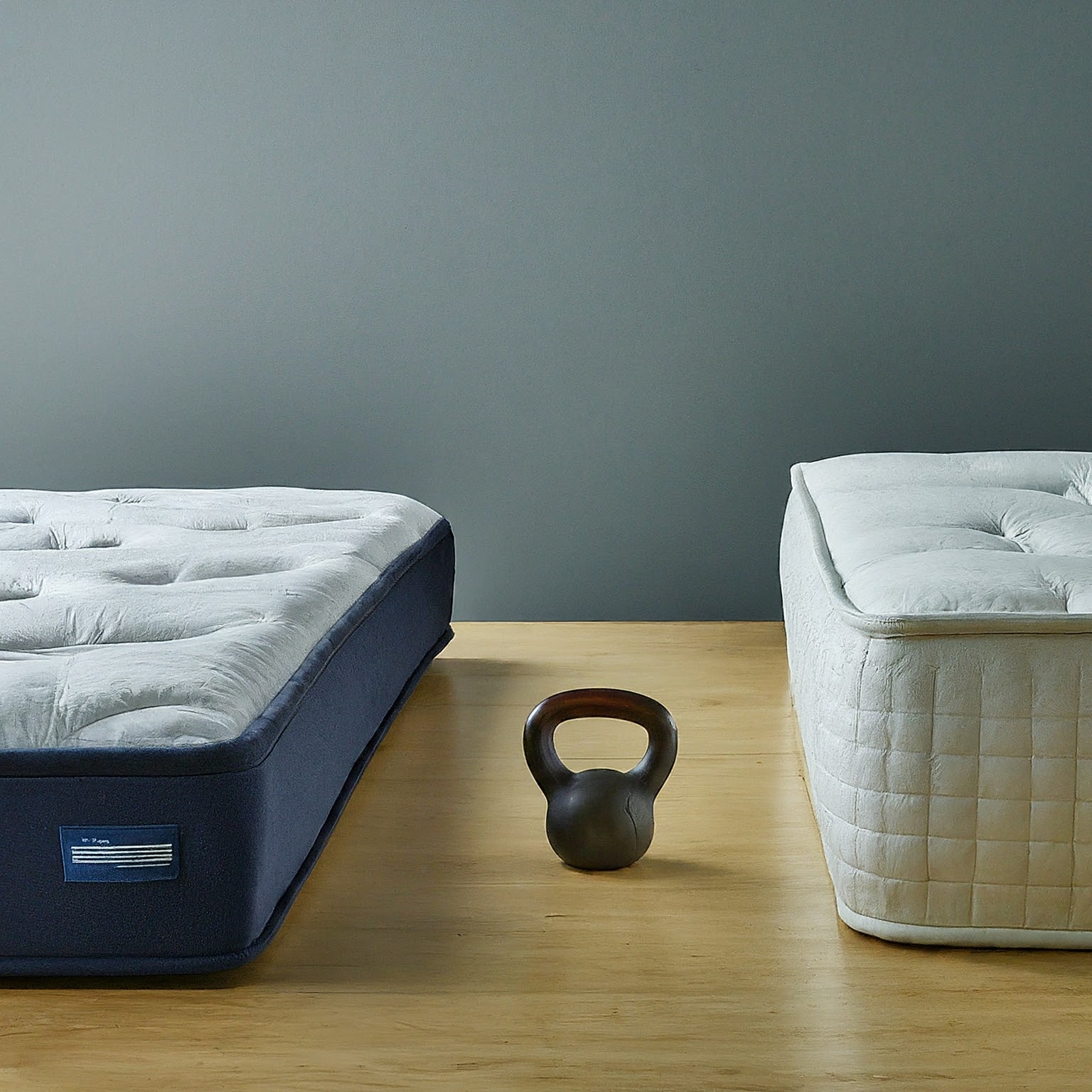Choosing the right mattress is crucial for a good night’s sleep and overall well-being. With so many options on the market, finding the perfect one can be overwhelming. In this guide, we’ll help you understand how to choose the best mattress for your sleep style, ensuring you wake up refreshed and pain-free.
Understanding Your Sleep Style
Before diving into mattress types, it’s essential to know your sleep style. The most common sleep positions are:
1. Back Sleeper: Lying flat on your back.
2. Side Sleeper: Lying on your side, usually with legs slightly bent.
3. Stomach Sleeper: Lying flat on your stomach.
4. Combination Sleeper: Alternating between positions throughout the night.
Understanding your sleep style is the first step in finding the perfect mattress. Each sleep position has unique support and comfort needs, and the right mattress can significantly improve your sleep quality.
Back Sleepers

Back sleepers need a mattress that supports the natural curve of their spine. Look for medium-firm mattresses that offer balanced support and pressure relief. A mattress that is too soft can cause the lower back to sink too much, leading to misalignment and discomfort. Conversely, a mattress that is too firm can create pressure points, causing pain in the shoulders and lower back.
Memory Foam: Memory foam mattresses are popular among back sleepers because they conform to the body, providing support where needed while maintaining the spine’s natural alignment. The foam’s ability to contour to the body’s shape helps distribute weight evenly, reducing pressure points.
Hybrid: Hybrid mattresses combine innerspring coils with foam layers, offering a balance of support and comfort. The coils provide a sturdy foundation, while the foam layers add contouring and pressure relief. This combination makes hybrid mattresses a good choice for back sleepers who want both support and cushioning.
Side Sleepers

Side sleepers need a mattress that cushions pressure points like shoulders and hips. A softer mattress that contours to the body is ideal. If a mattress is too firm, it can cause discomfort in these areas, leading to poor sleep quality and potential pain.
Memory Foam: Memory foam is excellent for side sleepers because it conforms to the body’s shape, providing pressure relief for the shoulders and hips. This contouring effect helps maintain proper spinal alignment, reducing the risk of pain and discomfort.
Latex: Latex mattresses offer a good balance of softness and support with a bit more bounce than memory foam. They are also durable and naturally resistant to dust mites and mold, making them a great option for allergy sufferers. The slight responsiveness of latex can make it easier to move and change positions during the night.
Stomach Sleepers
Stomach sleepers require a firmer mattress to prevent their hips from sinking, which can cause lower back pain. A mattress that is too soft can lead to the spine curving unnaturally, resulting in discomfort and pain.
Firm Foam: Firm foam mattresses provide the necessary support to keep the body aligned. They prevent the midsection from sinking too much, which helps maintain proper spinal alignment. This support is crucial for stomach sleepers to avoid lower back pain.
Hybrid: Hybrid mattresses offer firm support with the added benefit of a responsive surface. The combination of innerspring coils and foam layers provides a stable and supportive sleep surface while also offering some contouring and comfort. This balance can be beneficial for stomach sleepers who need both support and a bit of cushioning.
Combination Sleepers

Combination sleepers need a versatile mattress that accommodates multiple positions. Look for a medium-firm mattress with good motion isolation. A mattress with good motion isolation ensures that movements during the night do not disturb sleep, which is important for combination sleepers who change positions frequently.
Hybrid: Hybrid mattresses are great for combination sleepers because they provide all-around support and comfort. The combination of coils and foam layers offers a balanced sleep surface that can adapt to various sleep positions. This adaptability makes hybrid mattresses a popular choice for those who switch between sleeping on their back, side, and stomach.
Latex: Latex mattresses provide a responsive surface that’s easy to move on. They offer a good balance of support and comfort, making them suitable for combination sleepers. The natural bounce of latex can make it easier to change positions during the night without feeling stuck in the mattress.
Other Factors to Consider
Mattress Firmness
Firmness is subjective and depends on personal preference and body weight. A general guideline is:
Soft: Best for side sleepers and lighter individuals. Soft mattresses provide extra cushioning for the shoulders and hips, which is beneficial for side sleepers.
Medium: Suitable for combination sleepers and average-weight individuals. Medium-firm mattresses offer a balance of support and comfort, making them a versatile option for various sleep styles.
Firm: Ideal for back and stomach sleepers and heavier individuals. Firm mattresses provide the necessary support to keep the spine aligned, which is crucial for back and stomach sleepers.
Mattress Material
The material of your mattress affects its durability, comfort, and temperature regulation. Common materials include:
Memory Foam: Known for its contouring and pressure relief. Memory foam mattresses are popular for their ability to conform to the body’s shape, providing personalized support and comfort.
Latex: Durable, responsive, and naturally cooling. Latex mattresses are known for their durability and natural resistance to dust mites and mold. They also offer a bit more bounce than memory foam, making it easier to move and change positions during the night.
Innerspring: Offers traditional bounce and strong edge support. Innerspring mattresses have been a popular choice for many years due to their sturdy construction and strong edge support. The coils provide a responsive and supportive sleep surface.
–Hybrid: Combines the benefits of foam and innerspring for a balanced feel. Hybrid mattresses offer the best of both worlds, combining the support of innerspring coils with the contouring and pressure relief of foam layers.
Cooling Features
If you sleep hot, look for mattresses with cooling technology, such as:
Gel-Infused Foam: Helps dissipate heat. Gel-infused foam mattresses are designed to draw heat away from the body, keeping you cool throughout the night.
Breathable Covers: Promote airflow and keep you cool. Mattresses with breathable covers allow for better airflow, which helps regulate temperature and keep you cool.
Edge Support
Edge support is important for those who sit or sleep near the edge of the bed. Mattresses with good edge support prevent sagging and provide a stable sleep surface.
Innerspring: Innerspring and hybrid mattresses typically offer strong edge support due to their coil construction. The coils provide a sturdy edge, making it easier to sit or sleep near the edge of the bed without feeling like you might roll off.
Foam: Foam mattresses can vary in edge support. Some foam mattresses include reinforced edges to provide better support, while others may not offer as much stability near the edges.
Motion Isolation
Motion isolation is crucial for couples or those who share a bed with a pet. A mattress with good motion isolation prevents movement from disturbing the other person.
Memory Foam: Memory foam mattresses excel at motion isolation due to their contouring properties. The foam absorbs movement, preventing it from transferring across the bed.
Hybrid: Hybrid mattresses with thick foam layers also offer good motion isolation. The foam layers absorb movement, while the coils provide support and responsiveness.
Durability
Durability is an important factor to consider when investing in a mattress. A durable mattress will maintain its support and comfort for years, providing better value for your money.
Latex: Latex mattresses are known for their durability and longevity. Natural latex is particularly durable and resistant to sagging, making it a good investment.
Hybrid: Hybrid mattresses with high-quality materials can also be durable. The combination of coils and foam layers can provide long-lasting support and comfort.
Memory Foam: Memory foam mattresses can be durable, but it’s important to choose a high-density foam for better longevity. Lower-density foams may break down more quickly and lose their supportive properties.
Trial Period and Warranty
When purchasing a mattress, look for companies that offer a trial period and a warranty. A trial period allows you to test the mattress in your home to ensure it’s the right fit for you. A warranty provides peace of mind, covering any defects or issues that may arise.
Trial Period: Many mattress companies offer a trial period ranging from 90 to 120 nights. This allows you to test the mattress and return it if it doesn’t meet your needs.
Warranty: Look for a mattress with a warranty of at least 10 years. A good warranty covers defects in materials and workmanship, ensuring your investment is protected.
Choosing The Right Mattress
Choosing the best mattress for your sleep style involves understanding your sleeping position, firmness preference, and material needs. By considering these factors, you can find a mattress that provides the support and comfort necessary for a restful night’s sleep.
Remember, a good mattress is an investment in your health and well-being. Take your time to research and test different options to find the perfect match for your sleep style.

